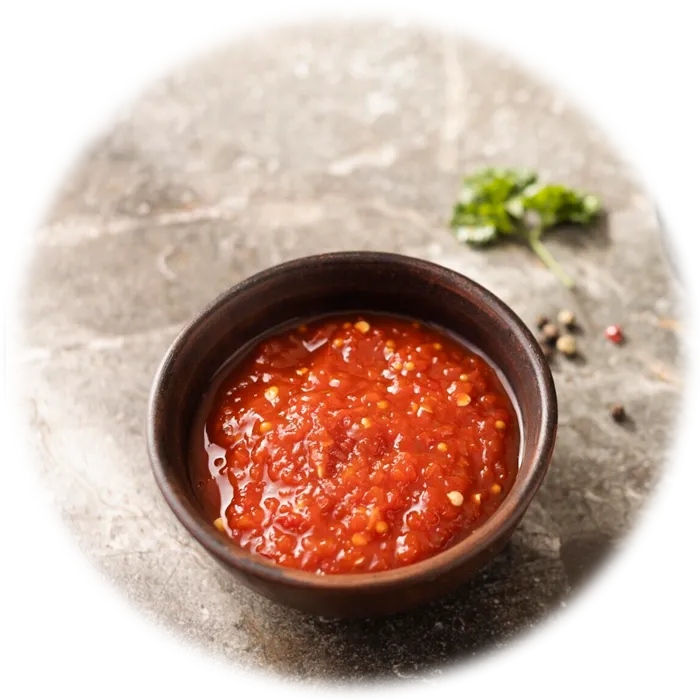Nutritional properties of Chili Seasoning
Energy :
350.00 Kcal / 100g
Category : Spices & Sauces
Group : Sauces
Composition And Nutritional Value :Chili seasoning is a spice blend typically used to enhance the flavor of chili, soups, and stews. The composition of chili seasoning can vary, but common ingredients include chili powder, cumin, garlic powder, onion powder, paprika, oregano, and sometimes cayenne pepper or crushed red pepper flakes for added heat. Chili seasoning is generally low in calories, with most of its composition being derived from spices and herbs, which provide essential oils, antioxidants, and small amounts of vitamins and minerals like vitamin A and vitamin C. The seasoning is also low in fat and sugar, making it a flavor-packed addition to many dishes without adding excessive calories.
Health Benefits : Chili seasoning offers various health benefits, mainly due to its spice components. Chili powder and cayenne pepper contain capsaicin, a compound known for boosting metabolism, aiding in fat burning, and supporting heart health by improving circulation and reducing blood pressure. Cumin is known to have antioxidant and anti-inflammatory properties, while garlic and onion powder support immune health and digestion. Paprika and oregano also contribute antioxidants, which help protect cells from oxidative stress. Overall, chili seasoning can be a flavorful and health-boosting addition to your meals, promoting metabolism, digestion, and overall wellness.
Culinary Uses : Chili seasoning is most commonly used in dishes like chili con carne, soups, stews, and tacos. It can be added to ground meats, vegetables, or beans to create hearty, flavorful dishes. The seasoning is also a key ingredient in spice rubs for grilled or roasted meats, such as chicken, pork, or beef. Chili seasoning can be used to flavor sauces, dips, and even roasted vegetables for an extra kick. Its versatility makes it a staple in many cuisines, especially Mexican, Southwestern, and Tex-Mex dishes, as well as in various comfort foods that benefit from its rich, savory heat.

